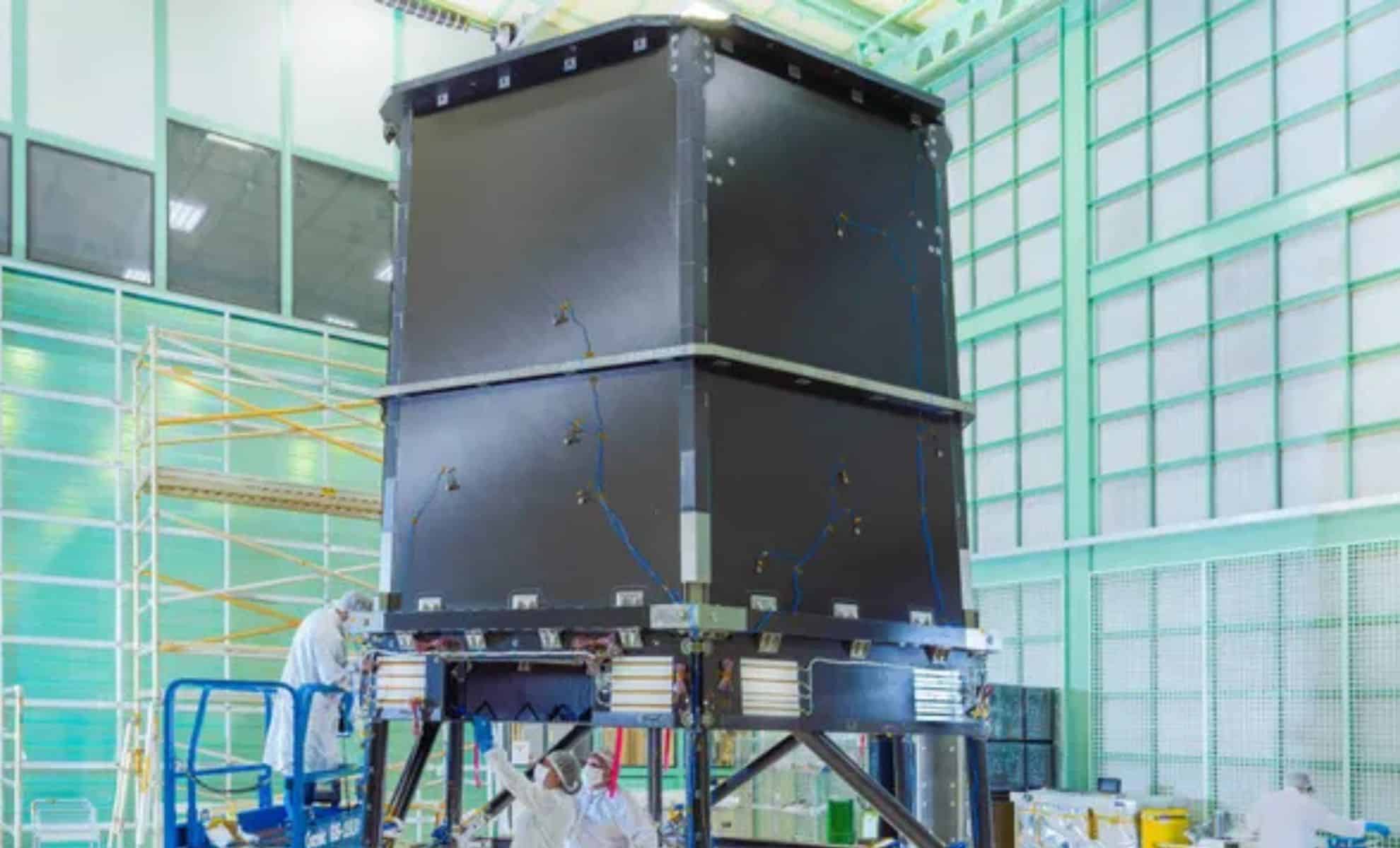The Nancy Grace Roman Space Telescope has passed rigorous centrifuge testing at NASA’s Goddard Space Flight Center, simulating the intense forces it will experience during launch. The tests evaluated the Outer Barrel Assembly, which will protect the telescope and regulate its temperature. This milestone brings NASA closer to launching the Roman Telescope, set for 2025, which will explore dark energy, exoplanets, and distant galaxies, offering groundbreaking insights into the universe.
NASA’s Roman Telescope Passes Extreme Tests, Clearing the Way for Groundbreaking Space Missions

The Nancy Grace Roman Space Telescope, one of NASA’s most anticipated next-generation space observatories, has successfully passed rigorous centrifuge testing at NASA’s Goddard Space Flight Center.
This testing focused on the telescope’s Outer Barrel Assembly, a critical component designed to protect the telescope from stray light and temperature fluctuations during its mission. The centrifuge trials simulate the intense gravitational forces the telescope will endure during launch, a necessary step to ensure the spacecraft’s resilience before its scheduled 2025 launch.
Testing the Limits: Extreme Spin Trials
The Roman Telescope's Outer Barrel Assembly underwent high-speed spin tests in a centrifuge chamber at NASA’s Goddard facility. The centrifuge, equipped with a 600,000-pound steel arm, applied centrifugal forces equivalent to over seven times Earth’s gravity (7G). While the assembly was spun at 18.4 rotations per minute, engineers tested its ability to withstand extreme conditions, ensuring it can survive the harsh environment of space.
Due to its size, the Outer Barrel Assembly was tested in two stages. The first stage involved the testing of its "stilts", referred to as the elephant stand, which will support and surround key instruments like the Wide Field Instrument and Coronagraph Instrument. The second stage involved the "house", a shell and ring that enclose the telescope’s core and help maintain consistent temperatures to prevent misalignment of the mirrors. Jay Parker, the product design lead for the assembly, remarked, “It’s designed a bit like a house on stilts, so we tested the ‘house’ and ‘stilts’ separately.”
Building a Robust Structure for the Cosmos
To maintain temperature stability, the Outer Barrel Assembly is constructed using advanced materials, including carbon fibers mixed with reinforced plastic, and connected by titanium fittings. This material choice ensures that the structure remains stiff enough to avoid warping under fluctuating temperatures, while also being lightweight enough to minimize the burden during launch. In addition, the assembly's inner structure features a honeycomb pattern, reducing weight while maximizing strength. This design is essential for keeping the telescope stable and functional in space, where even slight temperature variations could lead to misaligned mirrors and blurry images.
The assembly also serves as a protective exoskeleton, shielding the telescope from stray light that could interfere with its sensitive observations. This is crucial for the Roman Telescope’s mission, as it will be tasked with capturing high-precision data from distant exoplanets, galaxies, and even dark energy—the mysterious force driving the universe’s accelerating expansion.
Readying for Future Discoveries
The Roman Space Telescope will now move on to further testing phases, including thermal vacuum testing in 2025, to ensure it can endure the extreme temperature shifts and vacuum of space. Following this, the telescope will undergo vibration testing to simulate the shaking and stress of launch. Once all components are integrated, including solar panels and the Deployable Aperture Cover, the Roman Telescope will be ready for its long-awaited journey into space.
Scientists are excited about the telescope's potential to reshape our understanding of the universe. With a field of view 100 times larger than the Hubble Space Telescope, the Roman Telescope will be able to survey vast areas of the sky and reveal previously unknown cosmic phenomena. Julie McEnery, Roman's senior project scientist, emphasized the telescope's potential for serendipitous discoveries: “This Roman survey will provide a treasure trove of data for astronomers to comb through… We may serendipitously discover entirely new things we don't yet know to look for.”
By the time it launches in 2025, the Roman Space Telescope is expected to play a pivotal role in answering some of the biggest questions in modern astrophysics, from unraveling the mysteries of dark energy to uncovering hidden exoplanets in distant star systems.



